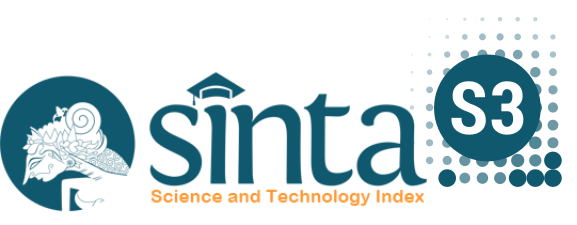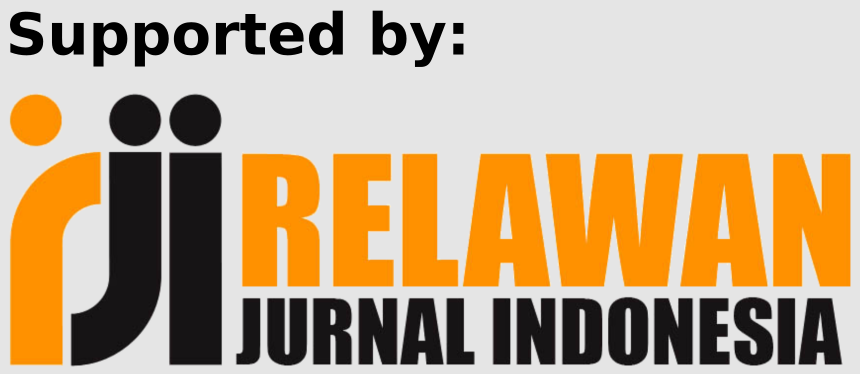The status of body mass index on heart rate recovery in young adults: literature review
DOI:
https://doi.org/10.31101/jhtam.2149Abstract views 1185 times
Keywords:
Body Mass Index, Heart Rate Recovery, Young Adults,Abstract
Downloads
References
Barbosa Lins, T. C., Valente, L. M., Sobral Filho, D. C., & Barbosa e Silva, O. (2015a). Relation between heart rate recovery after exercise testing and body mass index. Revista Portuguesa de Cardiologia (English Edition), 34(1), 27–33. https://doi.org/10.1016/j.repce.2014.07.004
Barbosa Lins, T. C., Valente, L. M., Sobral Filho, D. C., & Barbosa e Silva, O. (2015b). Relation between heart rate recovery after exercise testing and body mass index. Revista Portuguesa de Cardiologia (English Edition), 34(1), 27–33. https://doi.org/10.1016/j.repce.2014.07.004
Carnethon, M. R., Sternfeld, B., Liu, K., Jr, D. R. J., Schreiner, P. J., Williams, O. D., Lewis, C. E., & Sidney, S. (2012). 20 Years in a Healthy Population Sample. Young, 44(2), 273–279. http://ezproxy.leedsbeckett.ac.uk/login?url=http://search.ebscohost.com/login.aspx?direct=true&db=s3h&AN=70870657&authtype=athens&site=ehost-live&scope=site
Casadei, K., & Kiel, J. (2021). Anthropometric measurement. StatPearls Pulishing. http://www.ncbi.nlm.nih.gov/pubmed/30726000
Chen, J. Y., Lee, Y. L., Tsai, W. C., Lee, C. H., Chen, P. S., Li, Y. H., Tsai, L. M., Chen, J. H., & Lin, L. J. (2011). Cardiac autonomic functions derived from short-term heart rate variability recordings associated with heart rate recovery after treadmill exercise test in young individuals. Heart and Vessels, 26(3), 282–288. https://doi.org/10.1007/s00380-010-0048-6
de Araújo, J. A., Queiroz, M. G., Novelli, F. I., de Jesus Lima de Sousa, L. C., Tricot, G. K., Dias, A. R. L., Arsa, G., & Cambri, L. T. (2017). Aerobic fitness influences rest and heart rate recovery on young men regardless of body mass index. Sport Sciences for Health, 13(1), 217–223. https://doi.org/10.1007/s11332-017-0359-4
Dimkpa, U., & Oji, J. O. (2010). Association of heart rate recovery after exercise with indices of obesity in healthy, non-obese adults. European Journal of Applied Physiology, 108(4), 695–699. https://doi.org/10.1007/s00421-009-1276-2
El Agaty, S. M., Kirmani, A., & Labban, E. (2017). Heart rate variability analysis during immediate recovery from exercise in overweight/obese healthy young adult females. Annals of Noninvasive Electrocardiology, 22(3), 1–5. https://doi.org/10.1111/anec.12427
Guyton, A. C., & Hall, J. E. (2006). Textbook od Medical Physiology. In Elseiver Saunders (Eleventh E). Elseiver Inc.
Hanifah, R. A., Mohamed, M. N. A., Jaafar, Z., Mohsein, N. A. S. A., Jalaludin, M. Y., Majid, H. A., Murray, L., Cantwell, M., & Su, T. T. (2013). The correlates of body composition with heart rate recovery after step test: An exploratory study of Malaysian adolescents. PLoS ONE, 8(12), 1–9. https://doi.org/10.1371/journal.pone.0082893
Indraswarri, A., & Kusuma, H. (2018). Analisa pemanfaatan aplikasi Go-Food bagi pendapatan pemilik usaha rumah makan di Kelurahan Sawojajar Kota Malang. Jurnal Ilmu Ekonomi, 2, 63–73. http://ejournal.umm.ac.id/index.php/jie/article/view/6967
Jezdimirovic, T., Stajer, V., Semeredi, S., Calleja-Gonzalez, J., & Ostojic, S. M. (2017). Does body fat percentage predict post-exercise heart rate response in non-obese children & adolescents? Journal of Pediatric Endocrinology and Metabolism, 30(6), 629–633. https://doi.org/10.1515/jpem-2016-0468
Lusis, A. J. (2000). Atherosclerosis. Nature, 407(6801), 233–241. https://doi.org/10.1038/35025203
Makki, K., Froguel, P., & Wolowczuk, I. (2013). Adipose Tissue in Obesity-Related Inflammation and Insulin Resistance: Cells, Cytokines, and Chemokines. ISRN Inflammation, 2013, 1–12. https://doi.org/10.1155/2013/139239
Nelson, R. H. (2013). Hyperlipidemia as a Risk Factor for Cardiovascular Disease. Primary Care - Clinics in Office Practice, 40(1), 195–211. https://doi.org/10.1016/j.pop.2012.11.003
Organization, W. H. (2018). World Health Statistics 2018: Monitoring Health for The SDGs Sustainable Development Goals. In World Health Organization 2018. https://apps.who.int/iris/bitstream/handle/10665/272596/9789241565585-eng.pdf?sequence=1&isAllowed=y
Popkin, B. M., Adair, Li. S., & Ng, S. W. (2012). NOW AND THEN: The global nutrition transition: The pandemic of obesity in developing countries. Nutrition Reviews, 70(1), 3–21. https://doi.org/10.1111/j.1753-4887.2011.00456.x.NOW
Qiu, S., Cai, X., Sun, Z., Li, L., Zuegel, M., Steinacker, J. M., & Schumann, U. (2017). Heart rate recovery and risk of cardiovascular events and all-cause mortality: A meta-analysis of prospective cohort studies. Journal of the American Heart Association, 6(5). https://doi.org/10.1161/JAHA.117.005505
Sakurai, M., Miura, K., Takamura, T., Ota, T., Ishizaki, M., Morikawa, Y., Kido, T., Naruse, Y., & Nakagawa, H. (2006). Gender differences in the association between anthropometric indices of obesity and blood presssure in Japanese. Hypertension Research, 29(2), 75–80. https://doi.org/10.1291/hypres.29.75
Sco, M. I. R. E., Illiford, H. E. N. W., & Lson, M. I. S. O. (2011). S Kinfold T Hickness Is R Elated To. 2304–2310.
Sebo, P., Herrmann, F. R., & Haller, D. M. (2017). Accuracy of anthropometric measurements by general practitioners in overweight and obese patients. BMC Obesity, 4(1), 1–7. https://doi.org/10.1186/s40608-017-0158-0
World Health Organisation (WHO). (2015). Mean Body Mass Index ( BMI ). Http://Www.Who.Int/Gho/Ncd/Risk_Factors/Bmi_Text/En/#, 1–2.
Downloads
Published
How to Cite
Issue
Section
License
Authors who publish with Journal of Health Technology Assessment in Midwifery agree to the following terms:
- Authors retain copyright and grant the journal right of first publication with the work simultaneously licensed under a Creative Commons Attribution License (CC BY-SA 4.0) that allows others to share the work with an acknowledgment of the work's authorship and initial publication in this journal.
- Authors are able to enter into separate, additional contractual arrangements for the non-exclusive distribution of the journal's published version of the work (e.g., post it to an institutional repository or publish it in a book), with an acknowledgment of its initial publication in this journal.
- Authors are permitted and encouraged to post their work online (e.g., in institutional repositories or on their website) prior to and during the submission process, as it can lead to productive exchanges, as well as earlier and greater citation of published work.

Journal of Health Technology Assessment in Midwifery is licensed under a Creative Commons Attribution-ShareAlike 4.0 International License..













